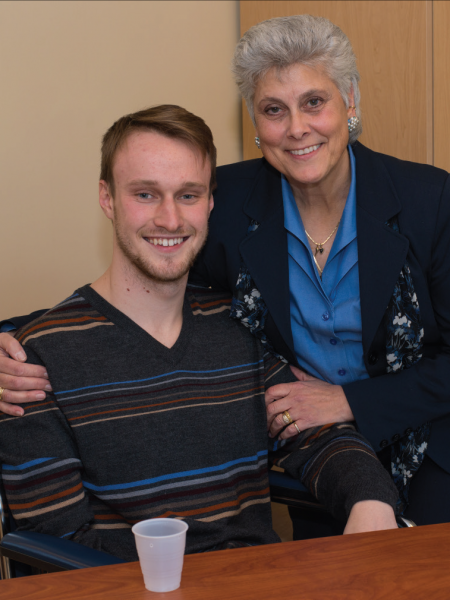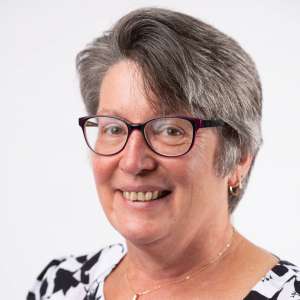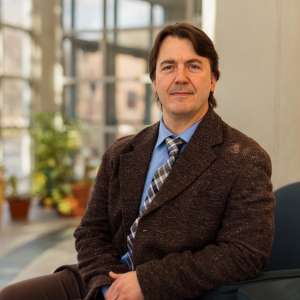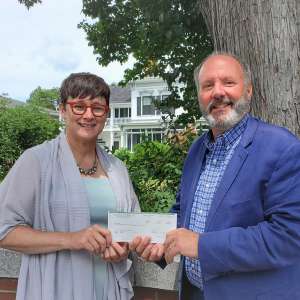Putting Medical Students in Their Patients’ Shoes (and Wheelchairs)

It’s one thing to understand the constraints that elders live with, and quite another to experience them first-hand.
Back in 2005, Marilyn Gugliucci ’76, professor and director of Geriatrics Education and Research at the College of Osteopathic Medicine of the University of New England in Biddeford, Maine, encountered a medical student who wanted to learn how to converse with older people living in institutions. Gugliucci thought for a moment, and came back with a quick question: “Would you live in a nursing home for two weeks as an elder resident?”
After a long hesitation, the young woman was game, and her stay at a nursing home launched what has become a regular program, Learning by Living: Nursing Home Immersion Research and Medical Education Project, for Gugliucci’s health professions students. Two or three have volunteered each summer since 2006 for a 14-day stay at a care facility.
“They go in because they want to be a better physician,” says Gugliucci. “They want to understand what it’s like to be the recipient of care. By the time they leave they say it’s been life altering for them. They have changed.”
And they’ve been changed, literally – as in diapered. As part of the program, each student is given a “diagnosis,” usually a stroke with aspiration pneumonia, and then is checked in to a shared room and treated the same way the other residents are. That includes being toileted, confined to a wheelchair, fed pureed foods, lifted from wheelchair to bed, and sent to physical/occupational therapy. Some students are assigned to secure dementia units. Some had to re-acclimate after being transferred from one floor to another with a new roommate during their stay.
They learn what their future older patients may go through, and the experience encourages them to consider the ways they might operate as health practitioners. One student told Gugliucci that he would think twice before ordering medication to be given to a patient at 2 in the morning, for instance, or to prevent a patient from going outside.
They also forge strong relationships with the elders. “At the end,” says Gugliucci, “they don’t want to leave; they connect heart to heart with the residents.”
Gugliucci, a physical education major at Keene State, has always been interested in aging and elders because she was very close to her grandparents when she was growing up. She went on to earn a doctorate in gerontology and has been full time faculty at the University of New England since 2006. The Society of Osteopathic Medical Educators (SOME) gave her the 2013 Marguerite Elliot Innovations in Clinical Medical Education Award from the American Association of Colleges of Osteopathic Medicine.
She also runs another Learning by Living Program, the 48-hour Hospice Home Immersion Project, which immerses second-year medical students for two days in an in-patient hospice home where they care for dying patients and their families. This program was recognized with the SOME 2017 Innovation in the Development of Enduring Medical Education Award.
Because her grandparents embraced life, Gugliucci says, she learned not to fear aging or death: “We can outswim our gene pool. We all age differently.” Staying in shape physically and remaining engaged and autonomous are key to what she calls “optimal aging.”
Her young students learn that by living with elders in a nursing home for two weeks, which leads them through “a sea of significant emotional experiences that they will never forget,” she says. “They look beyond diseases, frailties, and age, experiencing and understanding the essence of who each person is.”
The experience is a gift, one that resonates long after their two weeks is over.
– By Joanne Chow Rhodes
Nursing Home Life
What’s it like to live in a nursing home? Here’s a first-hand report by Dr. David Drozda, a former student of Dr. Marilyn Gugliucci ’76. It’s taken from a journal article the two coauthored.
“It was a frightening moment to be sitting in the [wheel] chair for the first time. Several things hit me all at once. The first is that I suddenly have to look up at everyone in order to make eye contact, and they have to look down at me. … I was conscious of the feeling that staff were ‘talking over my head,’ literally. … It made me feel vulnerable to have someone consistently direct their attention to a source that was both above and behind me. …
“Adapting to this environment was complex; a mix of new surroundings, new modes of transporting myself, dependence on others and strangers all around me. As I enter new environments now in my role as student doctor, I am reminded of these past feelings and remain conscious to the fact that all the people I encounter and provide care for are also adapting, which is far more challenging than I would have ever thought had I not lived in a nursing home. The word ‘pride’ is more prevalent in my lexicon – the importance of being allowed to struggle through things on your own, without initial assistance. And I wonder to this day what happens to people when they can no longer experience a sense of accomplishment; how do they adapt?”





